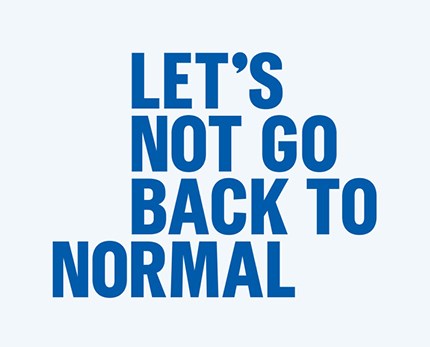Campaigns that changed the marketing world

- 13 August 2018
Marketing has the power to influence society, both positively and negatively. Here, we look back at some classic campaigns that permanently shifted our perceptions of what marketing can achieve.
Marketing campaigns, however dazzling they seem at the time, can often have a short shelf life. Once in a while, however – either because of craftsmanship or luck – a few initiatives endure for decades. They are remembered as landmarks for what marketing can achieve, both positive and negative.
Diamonds are forever
Many memorable advertising campaigns hope to tweak customer emotions, but some – such as that of diamond merchant De Beers – are also fortunate to tap into something that feels like an eternal truth. Before World War II, diamonds came to be perceived as an extravagance amid worldwide depression – and sales dipped. De Beers cast around for another approach to its marketing.
Salvation came in 1947, when the company hired advertising agency N W Ayer, which did its homework on social attitudes. From that, came the ‘immortal’ concept – that a diamond, like love, is forever. It became assimilated into popular culture, woven into books and, famously, the James Bond film Diamonds are Forever. The ‘slogan of the century’ allowed the world’s most expensive jewellery to transcend money.
Coffee and cigarettes
Few campaigns can claim to have changed the pattern of daily life. Take the Pan American Coffee Bureau, which helped created the concept of a coffee break at work. As a corporate interest group, formed in 1952, the bureau devised an ad campaign that piggy-backed on the post-war trend for workplace coffee machines. Give Yourself a Coffee Break – and Get What Coffee Gives to You created a legacy, as well as further iterations of the strapline, that lives on, and may do indefinitely.
These days, the mere mention of cigarette ads triggers near-universal disapproval. Yet, whether we like it or not, history will record the Marlboro campaign as a legendary success – notably in the way it shifted the perception of the brand to appeal to men instead of women.
Cue some macho advertising, handled by Chicago advertiser Leo Burnett and a lineup of manly smoking figures – above all, the cowboy. Market share rose from less than 1% to Marlboro becoming a bestseller. From 1963, its TV ads used Elmer Bernstein's theme from The Magnificent Seven, to capture the imagination and stay in the memory. Effective? Beyond doubt. A good thing for society? That’s another matter entirely.
VW thinks small
How, not long after World War Two, would you try to sell a modest model of German car to consumers in the land of gas-guzzling and slickly styled Ford Thunderbirds, Chevrolets and Studebakers? What’s more, how would you do it on a limited budget?
For Volkswagen, the answer was to hire New York ad agency DDB to come up with a campaign that not only stood out, but was completely different to anything that had gone before. The series of ads created by the agency, starting in 1959 and continuing through the 1960s, was revolutionary.
First, VW likened the shape of its Beetle model to a lemon. To add insult to injury, the ad copy reported defects in the manufacture: “This Volkswagen missed the boat. The chrome strip on the glove compartment is blemished, and must be replaced.” Then, for a post-war market in which the maxim ‘bigger is better’ could be applied to nearly all consumer goods, the agency had another deliberately risky message: ‘Think small.’ Later ads in the series surprisingly explained that the Beetle hadn’t changed in its design since 1951 – there had been no evolution to keep up with changing times.
The campaign is now regarded as one of the most memorable of all time, and truly broadened the scope of adverting’s creative work. Behind the strategy was the understanding that VW, as a challenger brand, could not compete with the might of the established market players. It found an alternative route into consumer consciousness – by ditching fantasy and allowing a reality (with which many consumers could identify) to speak for itself.
Spotlight on Super Humans
Today, marketing tends to promote a more socially responsible image. Brands are keen to demonstrate their heart is in the right place, often by championing political or social causes. In 2016, to coincide with the Rio Paralympics, Channel 4 TV launched its Year of Disability and Super Humans campaigns – this after the creation of a ‘360° diversity charter’ encompassing under-represented groups, such as LGBT.
However well-meaning, though, the campaign wasn’t universally celebrated. The reaction of a Guardian columnist – whose partner is an amputee footballer – to the pinned tweet on C4’s Twitter account, ‘There’s no such thing as can’t – Introducing our #superhumans trailer’, was one of irritation. In her view, it was “one of those supposedly ‘inspirational’ phrases that… is silly, facile and untrue”.
From warm words to shock tactics: there are many ways for campaigns to be memorable. Benetton, infamously, pursued shock, claiming its ads featuring a dying AIDS patient or the bloody clothes of a dead Croatian soldier were more about communicating ‘social messages’ than promoting fashion.
If nothing else, these punctured the cliché that all publicity is good publicity. In Germany, Benetton’s biggest market, sales plummeted. The company sued retailers for refusing to pay their bills, and they counter-sued for the money allegedly lost because of ads.
Always and ‘Like a girl’
Enter a more enlightened, modern approach. Always, a manufacturer of women’s sanitary towels, was on a mission to fight its corner via social media amid growing competition. The company claims the outcome – its #LikeAGirl campaign – turned the meaning of a once-derogatory phrase on its head.
Always commissioned research that showed more than half the women they surveyed said they lost confidence on reaching puberty. According to industry folklore, as marketers mulled over where to go next, someone attached a piece of paper to a board that simply read ‘like a girl’ – a eureka moment that changed the context into a term of empowerment. The resulting campaign included a video that sought to start a movement and spark a conversation, while hashtag #LikeAGirl became a rallying cry.
Being Red Bull-ish
In fiercely contested markets, the question for marketers is how to stand out. Solutions come in all forms: for Red Bull, the high-energy drink producer, the answer was to back projects that push the boundaries of endurance and technology.
Six years ago, Austrian skydiver Felix Baumgartner flew more than 23 miles into the stratosphere in a helium balloon. He then fell to Earth, free-falling before opening his parachute. As he reached more than 840mph, Baumgartner broke the sound barrier, the first human to do so without engine power.
He also broke two other records: for the highest manned balloon flight and the highest altitude jump. The company sponsored Baumgartner, and consequently its slogan, ‘Red Bull gives you wings’, hooked around seven million people via social media, with eight million watching the live feed. Worth the expense and risk? Well, it told us something new about what mankind can do, and the stunt yielded priceless exposure for its creator.
Although not every classic marketing campaign meets today’s ethical standards, all the examples cited here have one thing in common: they permanently moved the needle in terms of what marketing could achieve in a wider context. With a more responsible world view, today’s marketers can look back at what made these campaigns successful and seek to create work that resonates through the ages.
Gain the confidence to make real change with your marketing tactics by investing in your skills. View our wide range of training and qualifications options to find the route for you, all now available via virtual delivery.

Tags:
- 0 views

 FAQs
FAQs
 Log in
Log in
 MyCIM
MyCIM






